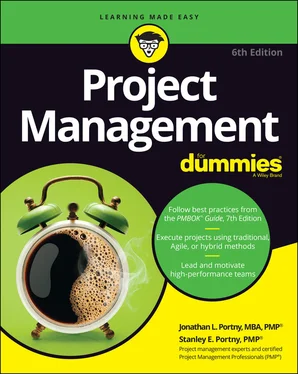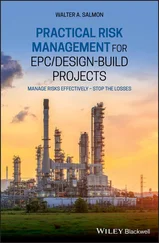| Phase |
Involvement Level |
How to Involve |
| Starting the project |
Moderate |
Wherever possible, have key supporters assess the feasibility of meeting driver expectations. If you identify key supporters later in the project, have them confirm the feasibility of previously set expectations. |
| Organizing and preparing |
Heavy |
Supporters are the major contributors to the project plan. Because they facilitate or do all the work, have them determine necessary technical approaches, schedules, and resources. Also have them formally commit to all aspects of the plan. |
| Carrying out the work |
Heavy |
Familiarize all supporters with the planned work. Clarify how the supporters will work together to achieve the results. Have supporters decide how they’ll communicate, resolve conflicts, and make decisions during the course of the project. Throughout the project, keep supporters informed of project progress, encourage them to identify performance problems they encounter or anticipate, and work with them to develop and implement solutions to these problems. |
| Closing the project |
Heavy |
Have supporters conclude their different tasks. Inform them of project accomplishments and recognize their roles in project achievements. Elicit their suggestions for handling similar projects more effectively in the future. |
TABLE 4-3Involving Observers in the Different Project Phases
| Phase |
Involvement Level |
How to Involve |
| Starting the project |
Minimal |
Inform observers of your project’s existence and its main goals. |
| Organizing and preparing |
Minimal |
Inform observers about the project’s planned outcomes and time-frames. |
| Carrying out the work |
Minimal |
Tell observers that the project has started and confirm the dates for planned milestones. Inform observers of key project achievements. |
| Closing the project |
Minimal |
When the project is done, inform observers about the project’s products and results. |
 Because observers don’t directly influence or affect your project, be sure to carefully manage the time and effort you spend sharing information with them. When deciding whom to involve and how to share information with them, consider the following:
Because observers don’t directly influence or affect your project, be sure to carefully manage the time and effort you spend sharing information with them. When deciding whom to involve and how to share information with them, consider the following:
Their level of interest in your project
The likelihood that your project will affect them at some point in the future
The need to maintain a good working relationship with them
Using different methods to involve your stakeholders
Keeping drivers, supporters, and observers informed as you progress in your project is critical to the project’s success. Choosing the right method for involving each stakeholder group can stimulate that group’s continued interest and encourage its members to actively support your work. Consider the following approaches for keeping your project stakeholders involved throughout your project:
One-on-one meetings: These meetings (which are formal or informal discussions with one or two other people about project issues) are particularly useful for interactively exploring and clarifying special issues of interest with a small number of people.
Group meetings: These meetings are planned sessions for some or all team members or stakeholders. Smaller meetings are useful to brainstorm project issues, reinforce team member roles, and develop mutual trust and respect among team members. Larger meetings are useful to present information of general interest.
Informal written correspondence: These are notes, messages, and emails that help you document informal discussions and share important project information.
More formal information-sharing vehicles: Information resources such as project newsletters or sites on the organization’s intranet may be useful for sharing nonconfidential and noncontroversial information with larger groups of stakeholders.
Written approvals: These include a technical approach to project work or formal agreements about a product, schedule, or resource commitment) and they serve as records of project decisions and achievements.
Flip to Chapter 15for additional suggestions for sharing information about your project’s ongoing performance.
Making the most of your stakeholders’ involvement
To maximize your stakeholders’ involvement and contributions, follow these guidelines throughout your project:
Involve stakeholders early in the project planning if they have a role later on. Give your stakeholders the option to participate in planning even if they don’t perform until later in the project. Sometimes they can share information that’ll make their tasks easier. At the least, they can reserve time to provide their services when you need them.
If you’re concerned with the legality of involving a specific stakeholder, check with your legal department or contracts office. Suppose you’re planning to award a competitive contract to buy certain equipment. You want to know whether prospective bidders typically have this equipment on hand and how long it’ll take to receive it after you award the contract. However, you’re concerned that speaking to potential contractors in the planning phase may tip them off about the procurement and lead to charges of favoritism by unsuccessful bidders who didn’t know about the procurement in advance.Instead of ignoring this important stakeholder, check with your contracts office or legal department to determine how you can get the information you want and still maintain the integrity of the bidding process.
Develop a plan with all key stakeholders to meet their information needs and interests as well as yours. Determine the information they want and the information you believe they need. Also decide when to provide that information and in what format. Finally, clarify what you want from them and how and when they can provide it.
Always be sure you understand each stakeholder’s “what’s in it for me” (WIIFM). Clarify why seeing your project succeed is in each stakeholder’s interest. Throughout your project, keep reminding your stakeholders of the benefits they’ll realize when your project’s complete and the progress your project has made toward achieving those benefits. Find out more about identifying project benefits for different stakeholders in Chapter 16.
Displaying Your Stakeholder Register
You’re concerned with two issues when developing the format and content of your stakeholder register:
Increasing your confidence that you identified all appropriate stakeholders
Helping others suggest people not on the register who should be included and people on the register who possibly should not
Figure 4-2 shows a sample stakeholder register format you may use for your stakeholder register. The format includes three major categories of information:
The hierarchical structure of the categories in which stakeholders are located
The specific identifiers of each stakeholder (job title and name)
The stakeholder’s role with regard to the project (driver, supporter, or observer; see the earlier section “ Determining Whether Stakeholders Are Drivers, Supporters, or Observers”)
 Feel free to add columns to your stakeholder register for optional information, such as email, phone, location or time zone, and so on.
Feel free to add columns to your stakeholder register for optional information, such as email, phone, location or time zone, and so on.
Читать дальше

 Because observers don’t directly influence or affect your project, be sure to carefully manage the time and effort you spend sharing information with them. When deciding whom to involve and how to share information with them, consider the following:
Because observers don’t directly influence or affect your project, be sure to carefully manage the time and effort you spend sharing information with them. When deciding whom to involve and how to share information with them, consider the following:










